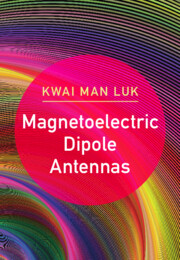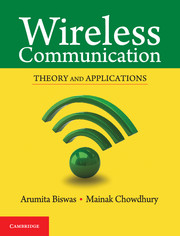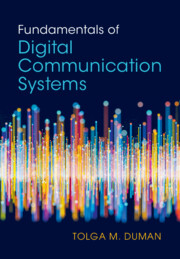Refine search
Actions for selected content:
3527 results in Wireless Communications
Index
-
- Book:
- Magnetoelectric Dipole Antennas
- Published online:
- 23 October 2025
- Print publication:
- 06 November 2025, pp 133-134
-
- Chapter
- Export citation
Copyright page
-
- Book:
- Magnetoelectric Dipole Antennas
- Published online:
- 23 October 2025
- Print publication:
- 06 November 2025, pp iv-iv
-
- Chapter
- Export citation
8 - Concluding Remarks
-
- Book:
- Magnetoelectric Dipole Antennas
- Published online:
- 23 October 2025
- Print publication:
- 06 November 2025, pp 131-132
-
- Chapter
- Export citation
6 - Bandwidth Enhancement Techniques for Magnetoelectric Dipoles
-
- Book:
- Magnetoelectric Dipole Antennas
- Published online:
- 23 October 2025
- Print publication:
- 06 November 2025, pp 80-98
-
- Chapter
- Export citation
5 - Size Reduction Techniques for Magnetoelectric Dipoles
-
- Book:
- Magnetoelectric Dipole Antennas
- Published online:
- 23 October 2025
- Print publication:
- 06 November 2025, pp 53-79
-
- Chapter
- Export citation
2 - The Basic Magnetoelectric Dipole
-
- Book:
- Magnetoelectric Dipole Antennas
- Published online:
- 23 October 2025
- Print publication:
- 06 November 2025, pp 16-24
-
- Chapter
- Export citation
1 - Introduction
-
- Book:
- Magnetoelectric Dipole Antennas
- Published online:
- 23 October 2025
- Print publication:
- 06 November 2025, pp 1-15
-
- Chapter
- Export citation
4 - Dual-polarized and Circularly Polarized Magnetoelectric Dipoles
-
- Book:
- Magnetoelectric Dipole Antennas
- Published online:
- 23 October 2025
- Print publication:
- 06 November 2025, pp 36-52
-
- Chapter
- Export citation
3 - Magnetoelectric Dipoles with Linear Polarization
-
- Book:
- Magnetoelectric Dipole Antennas
- Published online:
- 23 October 2025
- Print publication:
- 06 November 2025, pp 25-35
-
- Chapter
- Export citation
Preface
-
- Book:
- Magnetoelectric Dipole Antennas
- Published online:
- 23 October 2025
- Print publication:
- 06 November 2025, pp vii-viii
-
- Chapter
- Export citation
Contents
-
- Book:
- Magnetoelectric Dipole Antennas
- Published online:
- 23 October 2025
- Print publication:
- 06 November 2025, pp v-vi
-
- Chapter
- Export citation
7 - Millimeter-wave Magnetoelectric Dipoles
-
- Book:
- Magnetoelectric Dipole Antennas
- Published online:
- 23 October 2025
- Print publication:
- 06 November 2025, pp 99-130
-
- Chapter
- Export citation

Magnetoelectric Dipole Antennas
-
- Published online:
- 23 October 2025
- Print publication:
- 06 November 2025

Wireless Communication
- Theory and Applications
-
- Published online:
- 21 July 2025
- Print publication:
- 16 January 2017
-
- Textbook
- Export citation

Fundamentals of Digital Communication Systems
-
- Published online:
- 10 March 2025
- Print publication:
- 23 January 2025
-
- Textbook
- Export citation
4 - Digital Information Sources
-
- Book:
- Fundamentals of Digital Communication Systems
- Published online:
- 10 March 2025
- Print publication:
- 23 January 2025, pp 138-161
-
- Chapter
- Export citation
Index
-
- Book:
- Fundamentals of Digital Communication Systems
- Published online:
- 10 March 2025
- Print publication:
- 23 January 2025, pp 412-414
-
- Chapter
- Export citation
Contents
-
- Book:
- Fundamentals of Digital Communication Systems
- Published online:
- 10 March 2025
- Print publication:
- 23 January 2025, pp vii-x
-
- Chapter
- Export citation
Acknowledgments
-
- Book:
- Fundamentals of Digital Communication Systems
- Published online:
- 10 March 2025
- Print publication:
- 23 January 2025, pp xv-xv
-
- Chapter
- Export citation
5 - Digital Modulation – Fundamentals
-
- Book:
- Fundamentals of Digital Communication Systems
- Published online:
- 10 March 2025
- Print publication:
- 23 January 2025, pp 162-241
-
- Chapter
- Export citation
